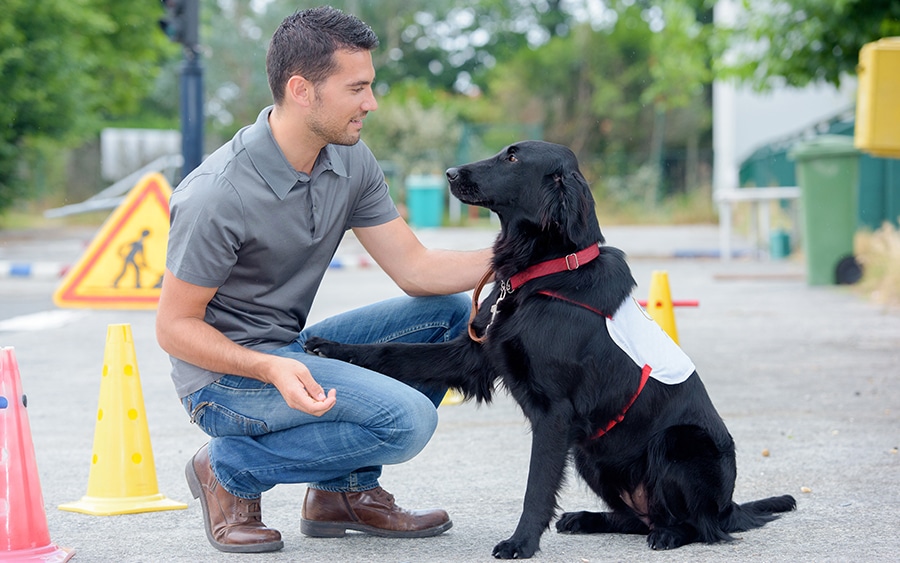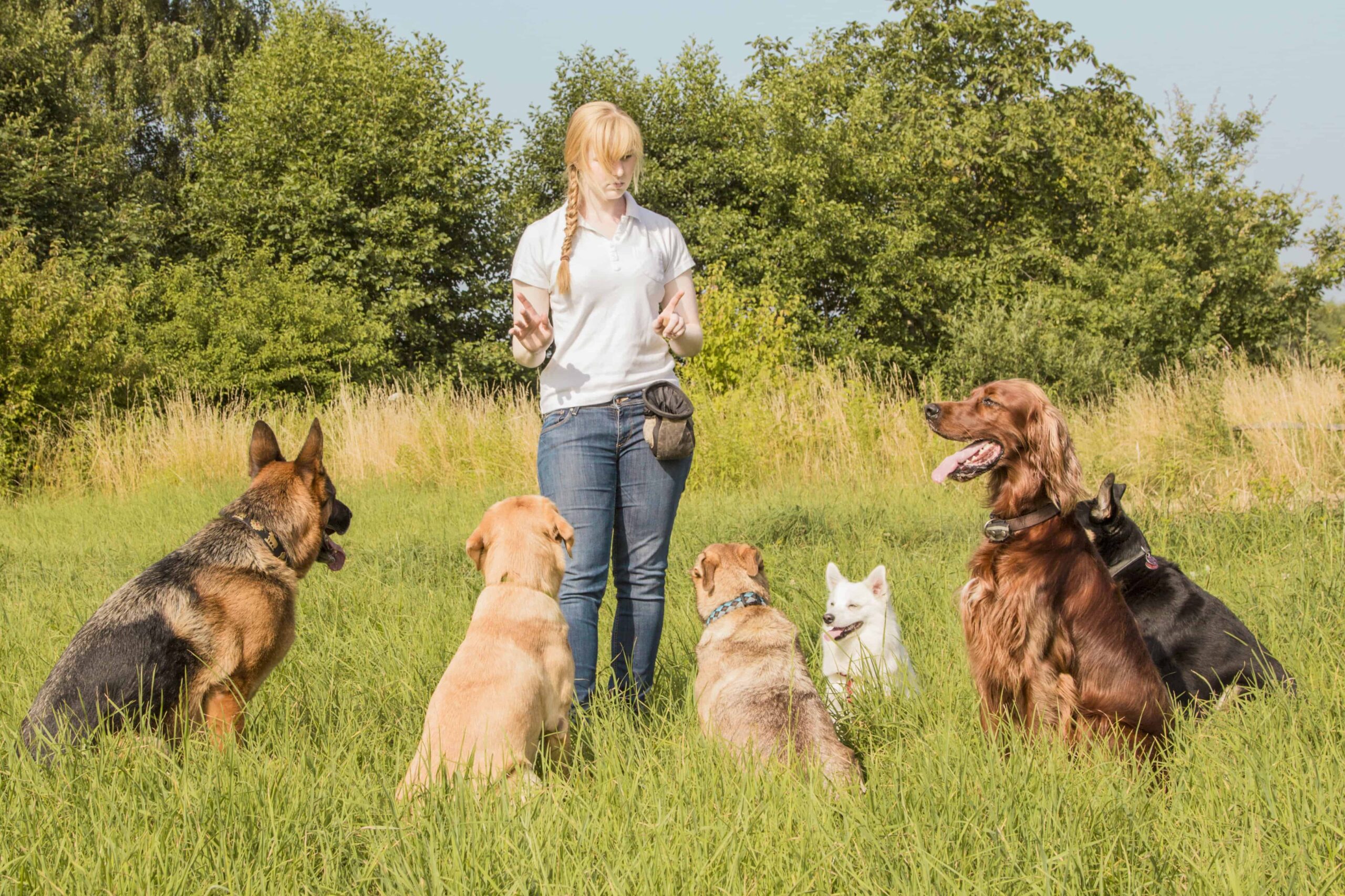Top Strategies for Effective Dog Training Techniques Every Pet Owner Should Know
Top Strategies for Effective Dog Training Techniques Every Pet Owner Should Know
Blog Article
Newbie's Guide to Effective Dog Training at Home
Effectively training a pet at home requires a nuanced understanding of canine behavior and efficient interaction strategies. Establishing clear training goals, making use of high-grade incentives, and maintaining uniformity throughout household participants are vital aspects. Incorporating training right into everyday regimens can improve both engagement and retention.
Comprehending Pet Behavior
Recognizing dog habits is necessary for efficient training and fostering a harmonious connection between people and their canine buddies. Dogs communicate primarily with body language, vocalizations, and faces, making it vital for proprietors to interpret these signals precisely. Identifying actions such as tail wagging, growling, or cring can provide insights right into a dog's emotional state and intents.

Common behavior issues, such as aggression, anxiety, or excessive barking, frequently originate from misconceptions or unmet demands. Observing and attending to these issues without delay can avoid rise and guarantee a positive training experience. By cultivating a deep understanding of dog behavior, owners can customize their training approaches to fit their canine companions, ultimately bring about a pleased and well-behaved animal.
Necessary Training Tools
A well-appointed training space can significantly boost the efficiency of dog training at home. Vital training tools guarantee that both the fitness instructor and the canine can take part in efficient sessions that foster discovering and bonding.

Buying a sturdy chain and a comfy, well-fitting collar or harness is important for safety and security and control. These tools help establish boundaries and guarantee the pet dog stays safe and secure throughout training. In addition, a marked training location, devoid of disturbances, aids focus for both the dog and the fitness instructor.
Educating aids such as training pads, cones, or agility devices can additionally improve the experience by introducing variety and difficulties. Last but not least, having a note pad or digital app for tracking progression can be important, enabling you to note successes and locations for enhancement. Making use of these crucial tools will certainly produce a favorable training environment and lay the structure for efficient understanding.
Creating a Training Routine
Developing a constant training regimen is necessary for efficient canine training in the house. A well-structured regular not just aids in enhancing preferred behaviors yet likewise provides your dog with a sense of security and predictability. To create a reliable training routine, start by recognizing particular training objectives, such as fundamental commands, leash walking, or house-training.
Choose a designated time every day for training sessions, preferably when your pet dog is responsive and alert. Sessions should be brief, around 5 to 15 minutes, to keep emphasis and stop fatigue. Consistency in timing and setting will boost your pet's knowing experience.
Integrate training right into day-to-day tasks to Discover More Here reinforce skills. For example, technique commands during strolls or nourishment, which incorporates learning into all-natural routines. Furthermore, continue to be flexible and adjust the see page routine as necessary, fitting your pet dog's power levels and mood.
Positive Support Techniques
Favorable support techniques are fundamental to effective canine training, advertising preferred behaviors via incentives as opposed to penalty. This approach utilizes positive stimulations, such as treats, appreciation, or playtime, to encourage canines to repeat certain activities. The foundation of this technique is timing; rewards need to be given immediately adhering to the wanted habits to develop a clear organization.
When implementing positive reinforcement, it is essential to pick incentives that are inspiring for your canine. High-value treats, such as small items of poultry or cheese, can be specifically reliable throughout training sessions. Furthermore, varying the incentives can preserve your dog's interest and interest.
Start with basic commands, like "sit" or "stay," and progressively progress to a lot more complicated tasks. Consistency is crucial; make certain that all relative use the exact same commands and incentive systems to prevent confusion.
Furthermore, it is important to continue to be individual and stay clear of aggravation. Dogs, like human beings, discover at their own rate. By fostering a helpful training atmosphere via favorable support, you can enhance your dog's understanding experience while strengthening the bond between you and your fuzzy companion, preparing for successful training outcomes.
Common Training Difficulties
While educating a pet in the house can be a gratifying experience, it commonly includes a collection of common obstacles that can test both perseverance and consistency. One prevalent problem is disturbance. Pets might end browse around here up being quickly sidetracked by sounds, movements, or also fragrances in their environment, making it hard to keep their focus throughout training sessions.
One more difficulty is inconsistency in commands and reinforcement. It can hinder and perplex the dog progression if household members utilize various signs or benefits. Developing a unified technique is necessary for reliable interaction.
Additionally, pet dogs can experience frustration or stress and anxiety, particularly if they do not understand what is anticipated of them. This can cause undesirable actions, such as chewing or barking.
Finally, the timing of support is critical (Dog training). Delayed incentives can lessen the effectiveness of positive reinforcement, as dogs might fail to attach the behavior with the incentive
Conquering these obstacles needs commitment, clear communication, and an organized training plan. Identifying and dealing with these usual barriers will lead the way for a much more pleasurable and successful training experience at home.
Conclusion
In final thought, successful pet dog training in the house necessitates a comprehensive understanding of canine actions and reliable communication methods. By developing clear training objectives and using top notch treats together with favorable support, the training process ends up being extra rewarding for both the dog and the instructor. Patience, uniformity, and flexibility are vital elements that assist in discovering. Inevitably, incorporating training right into everyday regimens boosts the bond between pet dog and proprietor, making the experience both enjoyable and efficient.
Establishing a consistent training routine is necessary for reliable pet dog training at home.Positive support techniques are fundamental to effective pet dog training, advertising wanted actions through benefits instead than punishment (Dog training). By cultivating an encouraging training setting via positive reinforcement, you can boost your canine's understanding experience while strengthening the bond in between you and your furry companion, laying the groundwork for effective training results
In final thought, successful dog training at home necessitates a detailed understanding of canine behavior and reliable communication techniques. By establishing clear training objectives and utilizing high-grade treats alongside positive reinforcement, the training procedure becomes extra satisfying for both the trainer and the pet.
Report this page